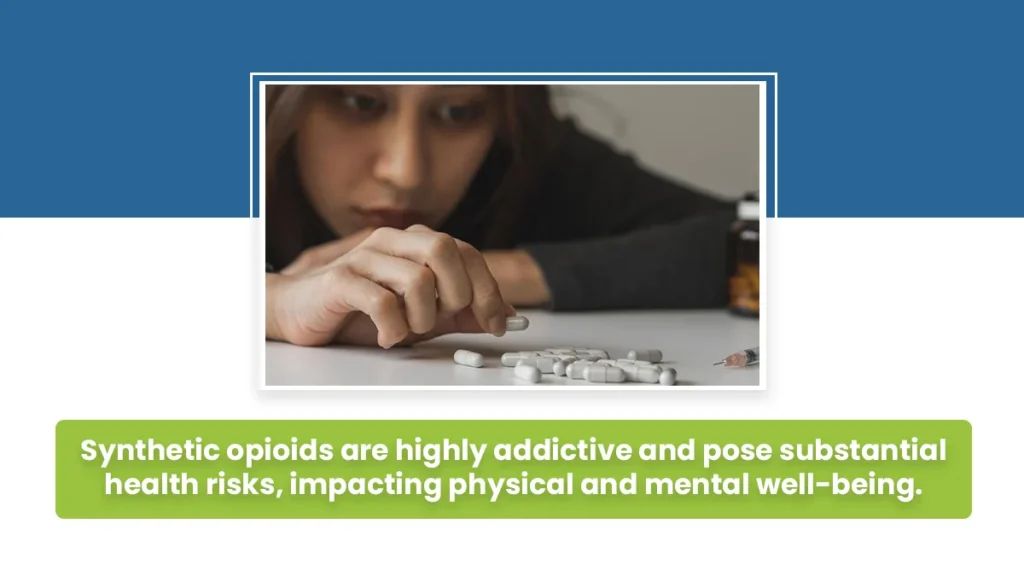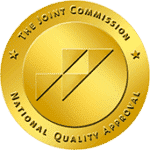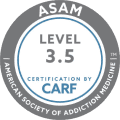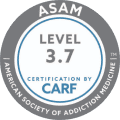Synthetic opioids, like fentanyl, are potent drugs in the United States, exacerbating the already dire opioid crisis. Their dangers lie in their extreme potency, often hundreds of times more powerful than traditional opioids like heroin.
Its potency makes overdoses more common, even when small amounts are consumed. Illicitly manufactured, these substances infiltrate the market, contributing to a surge in overdoses and deaths.

Tragically, many people, often unknowingly, encounter these dangerous synthetic opioids. Introducing harm reduction strategies and public awareness can help curb the devastating impact of these deadly drugs.
Key Takeaways
Synthetic opioids, like fentanyl, worsen the opioid crisis, with their extreme potency leading to more overdoses. Here is what you need to know:
- Synthetic opioids like fentanyl are dangerously potent and have fueled the opioid crisis in the U.S.
- Overdose deaths involving synthetic opioids, mainly fentanyl, have surged, raising significant concerns.
- Synthetic opioids are highly addictive and pose substantial health risks, impacting physical and mental well-being.
- Recognizing signs of abuse and finding treatment are crucial for those affected by synthetic opioid addiction.
- Prevention strategies, awareness, and responsible prescribing practices are vital in addressing this crisis.
The Haven Detox-New England offers specialized addiction treatment programs for those in need. Contact us today at (844) 933-4145.
Opioids: Explaining the Concept
Opioids, including natural opiates and synthetic compounds, affect the body’s opioid receptors, producing powerful analgesic effects. While they have legitimate medical uses, pharmaceutical fentanyl, oxycodone, and new psychoactive substances have fueled the opioid epidemic.
Illicitly manufactured fentanyl analogs often appear as white powder in the illicit drug market, posing a high risk of overdose when consumed in small amounts.
Medicinal Uses and Opioid Misuse
Opioids, encompassing natural opiates and synthetic compounds, interact with opioid receptors in the body, producing potent analgesic effects. Pills like oxycodone have genuine medical uses, effectively managing pain. However, the pharmaceutical industry’s aggressive marketing and over-prescription by doctors have inadvertently fueled the opioid epidemic.
Illicitly manufactured substances, such as pharmaceutical fentanyl and new psychoactive compounds like nitazene, have flooded the illicit drug market. These drugs, often sold as white powders, carry a high risk of overdose and are involved in synthetic opioid-related drug overdose deaths.
Their adverse effects and withdrawal symptoms further aggravate the crisis. Medication-assisted treatment programs are helpful to aid people with addiction and address the impact of substances on their bodies.
Historical Context of Synthetic Opioids
Synthetic opioids have a complex history, with early developments dating back to the 19th century. They’ve evolved significantly, impacting medical practices and contributing to the ongoing opioid crisis.
Early Developments
The history of synthetic opioids traces its origins to the early 19th century when chemists began experimenting with creating opioid-like compounds. Friedrich Sertürner’s discovery of morphine in 1804 marked a significant milestone. It led to the isolation of the first natural opioid. This breakthrough spurred further exploration into the synthesis of opioid compounds.
By the late 19th century, chemists successfully produced drugs like heroin and oxycodone, both of which found medical applications. However, the potential for addiction and abuse became evident, setting the stage for modern opioid-related challenges.
Modern Advancements
The latter half of the 20th century has witnessed significant advancements in synthetic opioids. Pharmaceutical companies developed potent opioids for pain management, including fentanyl and its analogs. These synthetic opioids offered highly effective pain relief but carried a substantial risk of overdose and addiction, contributing to the opioid epidemic.
Furthermore, laboratories began producing illicit synthetic opioids, flooding the market with substances like illegal fentanyl. The accessibility of these concentrated drugs led to a surge in overdose deaths.
A complex interplay of medical progress and public health challenges marks the history of synthetic opioids. That reflects the ongoing struggle to balance pain management with the risks associated with these potent substances.
Examples of Synthetic Opioids
Synthetic opioids come in various forms, each with unique properties and risks. Common synthetic opioids include fentanyl, methadone, tramadol, and carfentanil.
Fentanyl
Fentanyl is a synthetic opioid known for its extreme potency. It’s used in pharmaceutical industries for pain management but has tragically entered illegal drug markets.
The high potency of fentanyl can lead to severe respiratory depression, making synthetic opioids like fentanyl incredibly risky, often resulting in substance use disorders and overdose deaths.
Methadone
Methadone, another synthetic opioid, is used to treat opioid addiction and relieve pain. It’s less potent than fentanyl but still poses risks when misused. Methadone is carefully administered to avoid overdose and substance use disorders, especially since it can lead to respiratory depression.
Tramadol
Tramadol is a synthetic opioid prescribed for moderate to severe pain. It’s less potent than fentanyl or methadone but can still lead to substance use disorders when not specified. Like other synthetic opioids, tramadol must be used cautiously to prevent misuse.
Carfentanil
Carfentanil is an exceptionally potent synthetic opioid used to sedate large animals. Its use by humans is hazardous due to its potency.
Even a tiny amount can lead to a deadly overdose. The illegal presence of carfentanil in drug markets poses a grave risk to those seeking synthetic opioids, as it can swiftly lead to substance use disorders and deadly consequences.
Synthetic Opioids Amid Opioid Crisis
The role of synthetic opioids in the opioid crisis is substantial and concerning. Over the past two decades, the opioid crisis in the United States has escalated significantly, with synthetic opioids, particularly fentanyl, playing a central role.
The Centers for Disease Control (CDC) reports that in 2021, the number of overdose deaths involving synthetic opioids, such as fentanyl, was a staggering ten times higher than in 1999.
Synthetic Opioid Epidemic: Leading Factors
Fentanyl, with its powerful drug properties and chemical structure, has been increasingly appearing in street drugs, sometimes unknown to users. Its potency can lead to rapid tolerance and overdose.
Moreover, the opioid crisis has witnessed the emergence of new synthetic opioids, such as nitazene compounds (Frankenstein opioids), which pose additional challenges to law enforcement and public health.
The widespread availability of synthetic opioids in the illicit drug market has made it easier for people to obtain opioids without valid prescriptions. This accessibility, coupled with the high risk of overdose, has fueled the opioid crisis.
The opioid epidemic has dramatically harmed individuals, families, and communities. To combat this crisis effectively, implementing comprehensive strategies such as administering naloxone is vital to curb their impact.
Dangers and Risks of Synthetic Opioids
Synthetic opioids, including potent semi-synthetic varieties, pose severe dangers. These drugs are linked to rising overdose deaths and addiction.
Overdose and Death
The National Institute of Health reports a stark reality: overdose deaths involving synthetic opioids, primarily fentanyl, are rising. In 2021, a staggering 70,601 overdose deaths were attributed to these powerful narcotics. This concerning trend emphasizes the critical need for action and awareness regarding the lethal potential of synthetic opioids.
Addiction and Dependence
Synthetic opioids are highly addictive. Users may quickly develop dependence, leading to a relentless cycle of opioid use. This dependence is not limited to recreational drug users.
Those initially using synthetic opioids for legitimate medical purposes can also fall victim to addiction. The risk of addiction linked to these drugs, whether from prescriptions or illicit sources, is a substantial public health concern.
Physical and Mental Health Risks
Using synthetic opioids can have profound physical and mental health risks. Physically, they can cause respiratory depression, a potentially fatal side effect.
Mental health is impacted through the compulsive use of these drugs, which often results in social isolation, deteriorating personal relationships, and economic instability. The dangers extend beyond the individual, affecting families and communities, making it vital to address this crisis promptly.
Addressing Synthetic Opioid Abuse
Synthetic opioid abuse is a significant concern in the United States, with substances like nitazene and fentanyl causing a surge in opioid overdoses and opioid use disorder cases. Recognizing the signs of abuse, finding appropriate treatment, and implementing prevention strategies, such as nasal sprays, are critical in addressing this crisis.
Signs To Recognize
Identifying synthetic opioid abuse can be challenging as it affects both the brain and behavior. Common signs include increased tolerance, where individuals need more of the drug to achieve the same effect, and withdrawal symptoms when not using the medicine.
Behavioral changes of substance dependence include neglecting responsibilities, social withdrawal, and secretive behavior. Knowing these signs can lead to early intervention.
Seeking Treatment
For individuals struggling with synthetic opioid abuse, seeking opioid treatment is paramount. Finding a therapist or counselor experienced in addiction is an important step.
Treatment options may include counseling, medication-assisted treatment (using pill form to reduce cravings and withdrawal symptoms), and peer support. Tailored treatment plans managing the unique needs of patients are essential for successful recovery.
Prevention Strategies: Early Intervention
Preventing synthetic opioid abuse is as crucial as treatment. Strategies include:
- Increasing cognition about the dangers of these drugs.
- Promoting responsible prescribing practices.
- Improving access to addiction treatment.
Community-based programs can educate people about the risks and encourage early intervention. Additionally, proper disposal of prescription medications helps prevent them from falling into the wrong hands. Implementing a combination of prevention measures can help reduce the devastating impact of synthetic opioid abuse in our communities.
Frequently Asked Questions (FAQ)
What is the main difference between natural and synthetic opioids?
The primary difference between natural and synthetic opioids lies in their origin. Natural opioids (morphine and codeine) are derived directly from the opium poppy plant.
In contrast, synthetic opioids are created through chemical synthesis in laboratories with compounds not found in nature. Synthetic opioids, such as fentanyl, are often much more potent than their natural counterparts, making them riskier and more prone to abuse.
Is a synthetic opioid a narcotic?
Yes, a synthetic opioid is considered a narcotic. The term “narcotic” is often used to describe opioids broadly, encompassing both natural and artificial varieties.
Narcotics, including synthetic opioids like fentanyl, have decisive analgesic effects and the potential for abuse and dependence. They are regulated substances due to their psychoactive properties and the associated risks of misuse and addiction.
What are the potential health risks and side effects associated with synthetic opioid use?
Synthetic opioids come with significant health risks and side effects. These risks include a high potential for overdose due to their extreme potency. Side effects can encompass respiratory depression, sedation, constipation, and nausea.
Chronic use can lead a person to physical and psychological dependence, contributing to substance use disorders. Synthetic opioids can also interact adversely with other substances, compounding health risks. Using these drugs only under medical supervision and as prescribed is crucial to mitigate these potential dangers.
Defeat Addiction With The Haven Detox-New England
At The Haven Detox-New England, we understand the profound challenges of synthetic opioid dependence.
Our specialized opioid treatment program provides a safe and compassionate environment for you or your loved one. We will support you through the challenging withdrawal process with comprehensive detox services.
Following detox, our residential program ensures a holistic approach to healing, addressing addiction’s physical and psychological facets. Take the courageous step toward freedom. Contact us today at (844) 933-4145 for more information.



